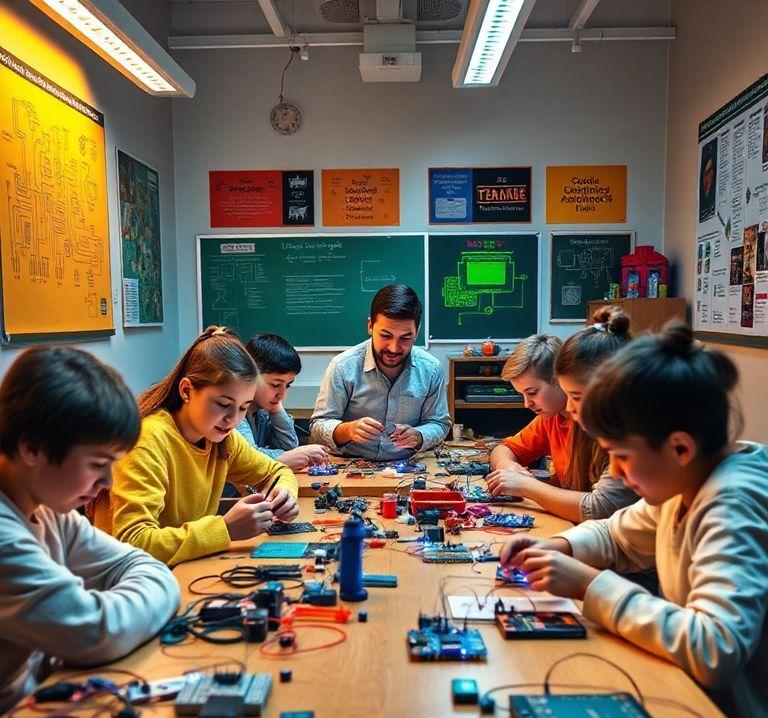Arduino and ESP32: Tools for Engineering and Programming Education
10.12.2024 - Engine: Gemini

Arduino and ESP32: Tools for Engineering and Coding Education
Arduino and ESP32 are microcontroller platforms that are ideally suited for use in education. They are low-cost, easy to use, and offer a wide range of features that allow students to gain hands-on experience with engineering and programming.
Hands-on Projects for Schools
Here are some hands-on projects that can be implemented in schools using Arduino and ESP32:
- Simple LED Circuits: Students can learn how to control LEDs and make them blink, fade, and pulse.
- Sensors: Using sensors such as temperature, light, and motion sensors allows students to collect and analyze data from their surroundings.
- Data Logging and Display: By connecting sensors to a display, students can visualize data in real-time and identify trends.
- Robots and Remote-Controlled Devices: By controlling motors and servos, students can develop robots and remote-controlled devices that respond to commands.
- Home Automation Projects: With Arduino and ESP32, students can monitor and control lights, outlets, and other devices in their environment.
Benefits for Education
Integrating Arduino and ESP32 into education offers numerous benefits:
- Hands-on Experience: Students learn how technology works through hands-on experiences, rather than just memorizing theoretical concepts.
- Problem-solving: Working on projects with Arduino and ESP32 challenges students to solve problems and come up with innovative solutions.
- Creativity: The platforms allow students to express their creativity and design and build their own projects.
- Teamwork: Working on projects in groups fosters teamwork and communication skills.
- Future-oriented: Arduino and ESP32 are widely used platforms in industry, so students gain skills that are essential for future careers.
Conclusion
Arduino and ESP32 are valuable tools for engineering and coding education in schools. Through hands-on projects, students can grasp fundamental concepts, develop problem-solving skills, express their creativity, and prepare for future careers in STEM fields.

